 Search by Keyword
|
“DON’T BOTHER ME”
(George Harrison)
Professional songwriting is a true craft. Anyone who has ever written a hit song will guard their early attempts at songwriting from being exposed to the world with his or her life, out of sheer embarrassment no doubt. In almost all cases, many years of trial and error precede any success that a songwriter will achieve in his lifetime.
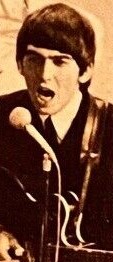 There are, of course, exceptions to any rule. George Harrison is a definite exception to this rule. Buoyed on by the success and financial advantages of Lennon and McCartney being hit-making songwriters for The Beatles as well as other artists, George saw a potential opportunity for himself. His self-proclaimed main focus within the group was to be the best lead guitarist that he could be, especially with the enormous British success The Beatles were enjoying by mid 1963. But now his focus suddenly began to shift to songwriting. There are, of course, exceptions to any rule. George Harrison is a definite exception to this rule. Buoyed on by the success and financial advantages of Lennon and McCartney being hit-making songwriters for The Beatles as well as other artists, George saw a potential opportunity for himself. His self-proclaimed main focus within the group was to be the best lead guitarist that he could be, especially with the enormous British success The Beatles were enjoying by mid 1963. But now his focus suddenly began to shift to songwriting.
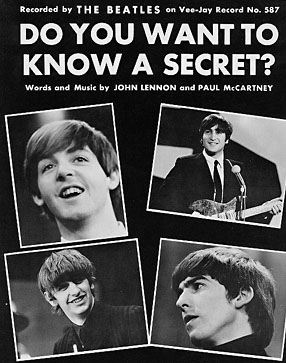 In order for George to have lead vocals to sing on their albums, he was relegated to singing cover songs in the earlier years, such as “Chains,” or Lennon / McCartney originals, such as “Do You Want To Know A Secret.” All of that changed forever in August of 1963. McCartney relates in the book "Beatles Anthology," "A lot of the girls were mad on him, so we always wanted to give him at least one track. Then George started to catch on, ‘Why should you write my songs?’ And he started writing his own." Actually, John and Paul were quite agreeable about including George as a songwriter for The Beatles, as he continues: "It was an option to include George in the songwriting team. John and I had already talked about it. I remember walking up past Woolton Church with John one morning and going over the question: 'Without wanting being too mean to George, would three of us write or would it be better to keep it simple?' We decided we'd just keep the two of us. He wrote 'Don't Bother Me.' That was the first one and he improved from that and became very good." In order for George to have lead vocals to sing on their albums, he was relegated to singing cover songs in the earlier years, such as “Chains,” or Lennon / McCartney originals, such as “Do You Want To Know A Secret.” All of that changed forever in August of 1963. McCartney relates in the book "Beatles Anthology," "A lot of the girls were mad on him, so we always wanted to give him at least one track. Then George started to catch on, ‘Why should you write my songs?’ And he started writing his own." Actually, John and Paul were quite agreeable about including George as a songwriter for The Beatles, as he continues: "It was an option to include George in the songwriting team. John and I had already talked about it. I remember walking up past Woolton Church with John one morning and going over the question: 'Without wanting being too mean to George, would three of us write or would it be better to keep it simple?' We decided we'd just keep the two of us. He wrote 'Don't Bother Me.' That was the first one and he improved from that and became very good."
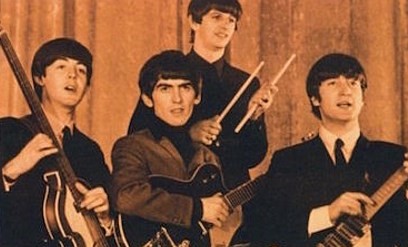 What is unique about this situation is that The Beatles were huge starts in Britain by the time George Harrison decided to give songwriting a try. Indeed, the band was on the brink of being properly introduced to the US market as well. "I used to have a hang-up about telling John, Paul and Ringo I had a song for an album," George admitted in 1969, "because I felt mentally, at that time, as if I was trying to compete. And in a way, the standard of the songs had to be good, because (John and Paul's) were very good. I don't want The Beatles to be recording rubbish for my sake...just because I wrote it." Instead of dismissing his very first attempt at writing a song, he confidently asserted himself in introducing that song as a contender for their second album, which was then in the process of being recorded. What is unique about this situation is that The Beatles were huge starts in Britain by the time George Harrison decided to give songwriting a try. Indeed, the band was on the brink of being properly introduced to the US market as well. "I used to have a hang-up about telling John, Paul and Ringo I had a song for an album," George admitted in 1969, "because I felt mentally, at that time, as if I was trying to compete. And in a way, the standard of the songs had to be good, because (John and Paul's) were very good. I don't want The Beatles to be recording rubbish for my sake...just because I wrote it." Instead of dismissing his very first attempt at writing a song, he confidently asserted himself in introducing that song as a contender for their second album, which was then in the process of being recorded.
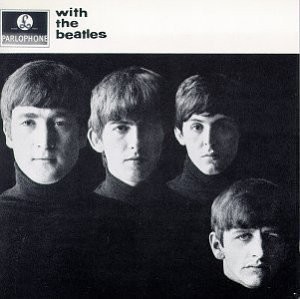 Harrison was credited as co-composer on two previously written songs in The Beatles' history, "In Spite Of All The Danger" with McCartney in 1958 and "Cry For A Shadow" with Lennon in 1961. However, as history shows, George’s first solo composition, “Don’t Bother Me,” appeared on the multi-million selling British album “With The Beatles” as well as the highly successful and influential American album “Meet The Beatles!,” which sold over five million copies shortly after its release. His confidence, as it turned out, was not unfounded. The song fit in very nicely on both of these albums and, by extension, earned an appearance in The Beatles' award-winning highly acclaimed first movie “A Hard Day’s Night.” Quite an impressive feat for an amateur songwriter. Harrison was credited as co-composer on two previously written songs in The Beatles' history, "In Spite Of All The Danger" with McCartney in 1958 and "Cry For A Shadow" with Lennon in 1961. However, as history shows, George’s first solo composition, “Don’t Bother Me,” appeared on the multi-million selling British album “With The Beatles” as well as the highly successful and influential American album “Meet The Beatles!,” which sold over five million copies shortly after its release. His confidence, as it turned out, was not unfounded. The song fit in very nicely on both of these albums and, by extension, earned an appearance in The Beatles' award-winning highly acclaimed first movie “A Hard Day’s Night.” Quite an impressive feat for an amateur songwriter.
Songwriting History
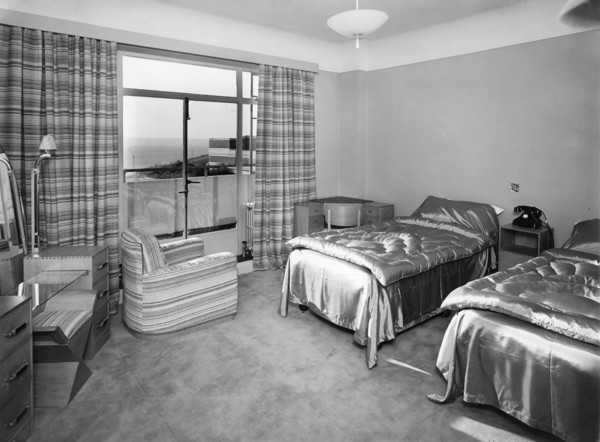 “I wrote the song as an exercise to see if I could write a song,” George explained. “I was sick in bed. Maybe that’s why it turned out to be ‘Don’t Bother Me.’” The bed that George was sick in was at the Palace Court Hotel, which was in Bournemouth, Hants, where they were playing six nights at Gaumont Cinema between August 19th and 24th, 1963 with Tommy Quickly and Billy J. Kramer and The Dakotas also on the bill. Evidence suggests August 19th, 1963 as the unofficial date the songwriting began, a doctor precribing him tonic and bed rest in-between performances. During their stay there on this week, incidentally, was when photographer Robert Freeman took the famous cover photograph of the group that graced the cover of both the British “With The Beatles” album and the American “Meet The Beatles!” album. “I wrote the song as an exercise to see if I could write a song,” George explained. “I was sick in bed. Maybe that’s why it turned out to be ‘Don’t Bother Me.’” The bed that George was sick in was at the Palace Court Hotel, which was in Bournemouth, Hants, where they were playing six nights at Gaumont Cinema between August 19th and 24th, 1963 with Tommy Quickly and Billy J. Kramer and The Dakotas also on the bill. Evidence suggests August 19th, 1963 as the unofficial date the songwriting began, a doctor precribing him tonic and bed rest in-between performances. During their stay there on this week, incidentally, was when photographer Robert Freeman took the famous cover photograph of the group that graced the cover of both the British “With The Beatles” album and the American “Meet The Beatles!” album.
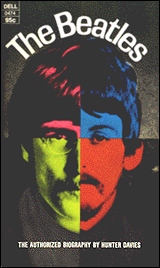 George discussed the song's writing in more detail in Hunter Davies' biography "The Beatles." "I was a bit run down and was supposed to be having some sort of tonic, taking it easy for a few days. I decided to try to write a song, just for a laugh. I got out my guitar and just played around till a song came. I forgot all about it till we came to record the next LP. It was a fairly crappy song. I forgot about it completely once it was on the album." On January 8th, 1969, during their rehearsals of George's song "I Me Mine" at Twickenham Studios, George elaborated further about the writing of "Don't Bother Me": "I know I was in bed, at Bourenmouth. We were on a summer season. And the doctor gave me some tonic, which must have had amphetamine or something in it. And the rest of you all just drank it to get high. And that's when I wrote that one." While in bed, the guitarist recorded this songwriting experience on a portable tape recorder, a portion of this recording later surfacing that displays him writing the song's bridge while whistling the melody line. George discussed the song's writing in more detail in Hunter Davies' biography "The Beatles." "I was a bit run down and was supposed to be having some sort of tonic, taking it easy for a few days. I decided to try to write a song, just for a laugh. I got out my guitar and just played around till a song came. I forgot all about it till we came to record the next LP. It was a fairly crappy song. I forgot about it completely once it was on the album." On January 8th, 1969, during their rehearsals of George's song "I Me Mine" at Twickenham Studios, George elaborated further about the writing of "Don't Bother Me": "I know I was in bed, at Bourenmouth. We were on a summer season. And the doctor gave me some tonic, which must have had amphetamine or something in it. And the rest of you all just drank it to get high. And that's when I wrote that one." While in bed, the guitarist recorded this songwriting experience on a portable tape recorder, a portion of this recording later surfacing that displays him writing the song's bridge while whistling the melody line.
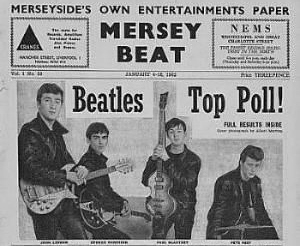 In regards to inspiration, an unconfirmed experience sheds a little light on the subject for “Don’t Bother Me.” Bill Harry, long-time friend of The Beatles and founder of the Liverpool music paper “Mersey Beat,” used to pester George repeatedly to become a songwriter like his band mates were. He would ask George if he had written one yet whenever he would run into him. Harry relates, “When George was about to go out one night, he thought he might bump into me, so he started writing a number which he called ‘Don’t Bother Me.’” While this may or may not be just an amusing anecdote, what is confirmed is that George wrote this dourly resentful song because he “felt low and wanted to be left alone.” In regards to inspiration, an unconfirmed experience sheds a little light on the subject for “Don’t Bother Me.” Bill Harry, long-time friend of The Beatles and founder of the Liverpool music paper “Mersey Beat,” used to pester George repeatedly to become a songwriter like his band mates were. He would ask George if he had written one yet whenever he would run into him. Harry relates, “When George was about to go out one night, he thought he might bump into me, so he started writing a number which he called ‘Don’t Bother Me.’” While this may or may not be just an amusing anecdote, what is confirmed is that George wrote this dourly resentful song because he “felt low and wanted to be left alone.”
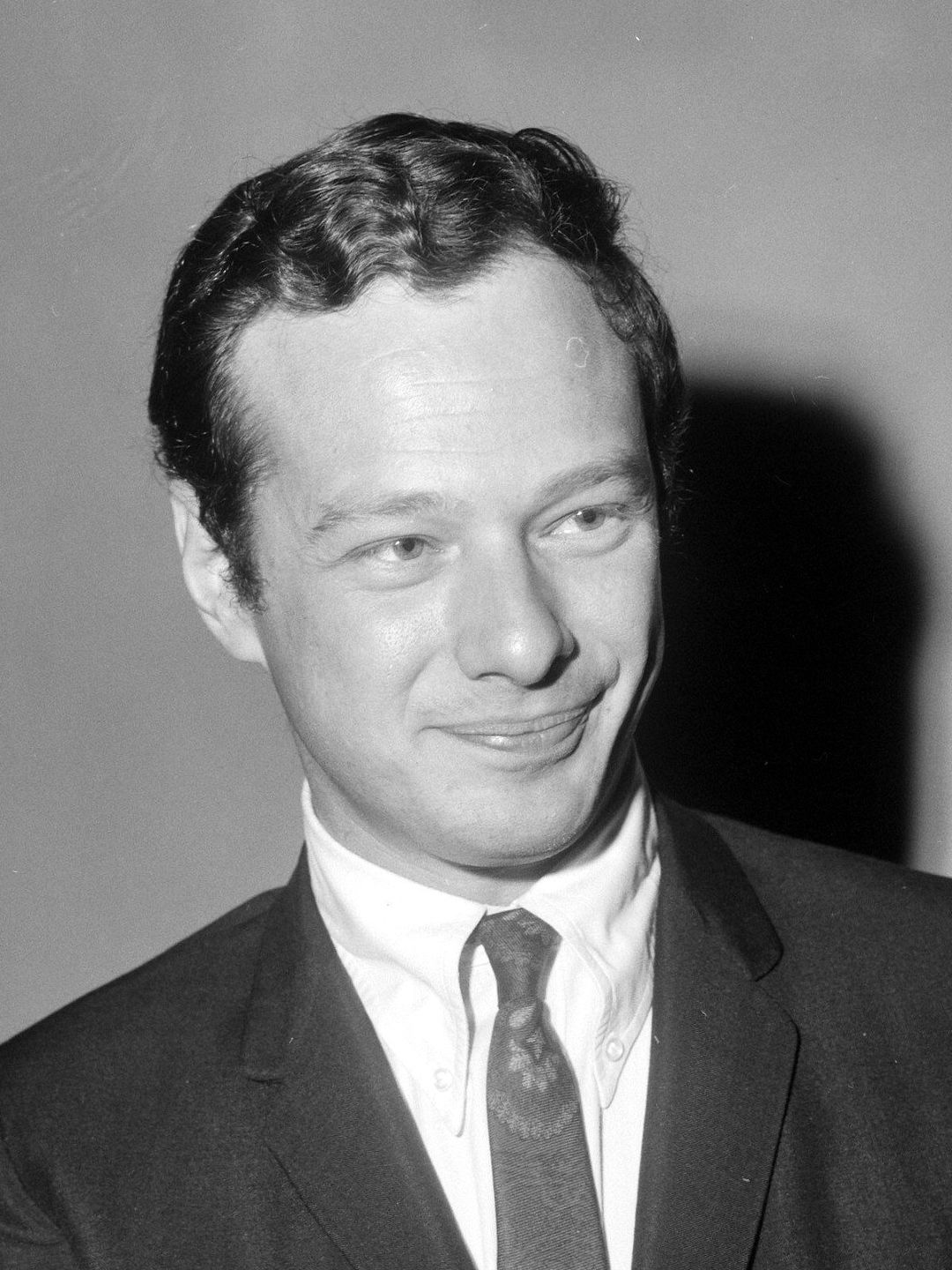 This self-admitted “exercise” of writing a song did have a lucrative outcome in the long run. Not only did the song itself provide George Harrison with a taste of the financial success that Lennon and McCartney were enjoying, but the benefits extended much further. “At least it showed me that all I needed to do was keep on writing and maybe eventually I would write something good,” Harrison related. “It did, however, provide me with an occupation.” Since this first George Harrison composition predated the five-year contract he signed with Northern Songs on November 9th, 1963, "Don't Bother Me" was published by the Dick James - Brian Epstein partnership called Jaep Music. His new songwriting occupation broadened his outlook as well as his role within The Beatles. Not only was he their lead guitarist, but now a contributing songwriter as well. This role as songwriter would continue to grow in quantity as well as quality throughout The Beatles’ career, throughout his solo years and for the rest of his life. This self-admitted “exercise” of writing a song did have a lucrative outcome in the long run. Not only did the song itself provide George Harrison with a taste of the financial success that Lennon and McCartney were enjoying, but the benefits extended much further. “At least it showed me that all I needed to do was keep on writing and maybe eventually I would write something good,” Harrison related. “It did, however, provide me with an occupation.” Since this first George Harrison composition predated the five-year contract he signed with Northern Songs on November 9th, 1963, "Don't Bother Me" was published by the Dick James - Brian Epstein partnership called Jaep Music. His new songwriting occupation broadened his outlook as well as his role within The Beatles. Not only was he their lead guitarist, but now a contributing songwriter as well. This role as songwriter would continue to grow in quantity as well as quality throughout The Beatles’ career, throughout his solo years and for the rest of his life.
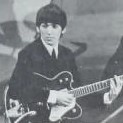 George's introduction to songwriting was very much learned from his band mates. “I knew a little bit about writing from the others, from the privileged point of sitting in the car when a song was written or coming into being.” However, collaboration was not of interest to George in those days, as he continues, “Writing on my own became the only way I could do it, because I started like that. Consequently, over the years, I never really wrote with anyone else and I became a bit isolated. I suppose I was a bit paranoid because I didn't have any experience of what it was like, writing with other people. It's a tricky thing. What's acceptable to one person may not be acceptable to another." George's introduction to songwriting was very much learned from his band mates. “I knew a little bit about writing from the others, from the privileged point of sitting in the car when a song was written or coming into being.” However, collaboration was not of interest to George in those days, as he continues, “Writing on my own became the only way I could do it, because I started like that. Consequently, over the years, I never really wrote with anyone else and I became a bit isolated. I suppose I was a bit paranoid because I didn't have any experience of what it was like, writing with other people. It's a tricky thing. What's acceptable to one person may not be acceptable to another."
Recording History
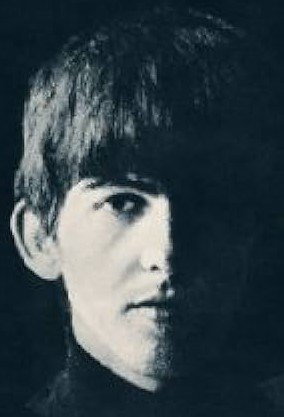 Between August 19th and 24th, 1963 a private recording of George composing and structuring the song was made at the Palace Court Hotel in Bournemouth, Hants (as detailed above). This tape, which has later surfaced on bootlegs and online, was possibly played to the rest of the band to facilitate learning the song in preparation for their actual recording session in the recording studio. Between August 19th and 24th, 1963 a private recording of George composing and structuring the song was made at the Palace Court Hotel in Bournemouth, Hants (as detailed above). This tape, which has later surfaced on bootlegs and online, was possibly played to the rest of the band to facilitate learning the song in preparation for their actual recording session in the recording studio.
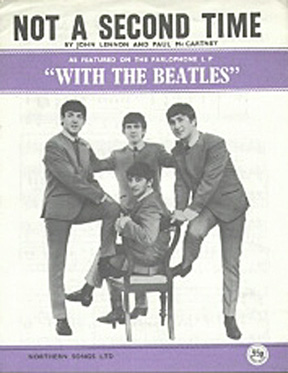 September 11th, 1963 became the first Beatles recording session to feature a George Harrison composition, this taking place in EMI Studio Two. It was the last of five songs attempted this day, which was the third day of recording songs for their second British album "With The Beatles." While the first session of the day began work on "I Wanna Be Your Man," "Little Child" and the full recording of "All I've Got To Do," the evening session, which ran from 7 until 10:15 pm, first concentrated on fully recording the Lennon-penned “Not A Second Time” and then giving some attention to George's “Don’t Bother Me” at approximately 9 pm, John and Paul's songs being given the usual priority. September 11th, 1963 became the first Beatles recording session to feature a George Harrison composition, this taking place in EMI Studio Two. It was the last of five songs attempted this day, which was the third day of recording songs for their second British album "With The Beatles." While the first session of the day began work on "I Wanna Be Your Man," "Little Child" and the full recording of "All I've Got To Do," the evening session, which ran from 7 until 10:15 pm, first concentrated on fully recording the Lennon-penned “Not A Second Time” and then giving some attention to George's “Don’t Bother Me” at approximately 9 pm, John and Paul's songs being given the usual priority.
 Four full band performances were recorded on this day. John Lennon, being in an experimental mood, tried out a new gadget that they had purchased a few months earlier at Selmer’s music store in London, this being a Gibson Maestro Fuzz-Tone. George had attempted to use this early distortion effect during the sessions for “She Loves You” back on July 1st of that year, but they decided not to use it on the final recording. Lennon was eager to get some use out of it on this day and tried it out on these early attempts at the rhythm track. Four full band performances were recorded on this day. John Lennon, being in an experimental mood, tried out a new gadget that they had purchased a few months earlier at Selmer’s music store in London, this being a Gibson Maestro Fuzz-Tone. George had attempted to use this early distortion effect during the sessions for “She Loves You” back on July 1st of that year, but they decided not to use it on the final recording. Lennon was eager to get some use out of it on this day and tried it out on these early attempts at the rhythm track.
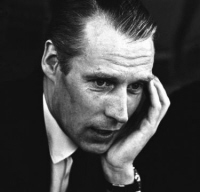 According to the September 28th, 1963 issue of Melody Maker, a journalist was present in EMI Studio Two on this day. He reported, “When they had rearranged the opening bars, John produced a fuzz box…John was knocked out with the result, but George Martin wasn’t too happy. ‘You’ll have to do something, John,’ said (George) Martin. ‘It’s already distorting from the amplifier. Do you think it sounds OK? Are you sure about it?’” According to the September 28th, 1963 issue of Melody Maker, a journalist was present in EMI Studio Two on this day. He reported, “When they had rearranged the opening bars, John produced a fuzz box…John was knocked out with the result, but George Martin wasn’t too happy. ‘You’ll have to do something, John,’ said (George) Martin. ‘It’s already distorting from the amplifier. Do you think it sounds OK? Are you sure about it?’”
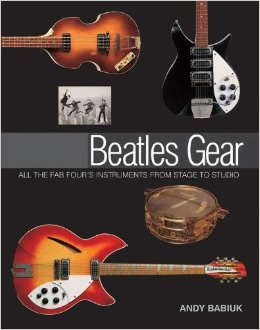 Apparently the use of this device was shelved for the day, the effect not being used until George’s “Think For Yourself” was recorded two years later. Still wanting to try something new, George Harrison asked engineer Norman Smith, “Can we have a compressor on this guitar? We might try to get a sort of organ sound.” What they came up with was the use of amplifier tremolo on John’s guitar, which provided a rhythmic fluctuation of volume. As stated in Andy Babiuk’s book “Beatles Gear,” “This was the group’s first evident use in the studio of an electronic effect on the guitar sound, and thus marked the start of a search for unusual sounds and heralded the group’s role as studio experimenters in coming years.” Apparently the use of this device was shelved for the day, the effect not being used until George’s “Think For Yourself” was recorded two years later. Still wanting to try something new, George Harrison asked engineer Norman Smith, “Can we have a compressor on this guitar? We might try to get a sort of organ sound.” What they came up with was the use of amplifier tremolo on John’s guitar, which provided a rhythmic fluctuation of volume. As stated in Andy Babiuk’s book “Beatles Gear,” “This was the group’s first evident use in the studio of an electronic effect on the guitar sound, and thus marked the start of a search for unusual sounds and heralded the group’s role as studio experimenters in coming years.”
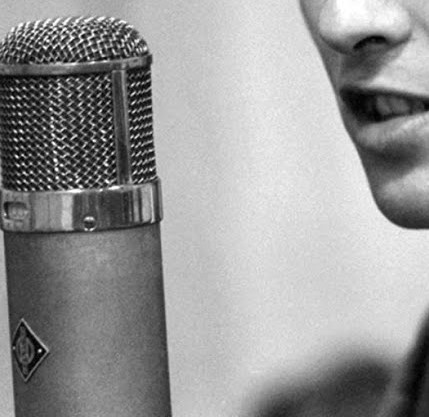 While the original two-track tape was being transfered onto another two-track machine, three overdub attempts (most likely lead vocals from George) were recorded simultaneously onto (presumably) "take four" before it was determined that this rendition of the song was not satisfactory, or as author John C. Winn wrote in 2008, they all were simply running past the slated recording session time. The resulting recording had more of a straightforward beat style at this stage and had apparently not been thoroughly rehearsed by the group. A new song structure was called for, so the song was temporarily shelved. While the original two-track tape was being transfered onto another two-track machine, three overdub attempts (most likely lead vocals from George) were recorded simultaneously onto (presumably) "take four" before it was determined that this rendition of the song was not satisfactory, or as author John C. Winn wrote in 2008, they all were simply running past the slated recording session time. The resulting recording had more of a straightforward beat style at this stage and had apparently not been thoroughly rehearsed by the group. A new song structure was called for, so the song was temporarily shelved.
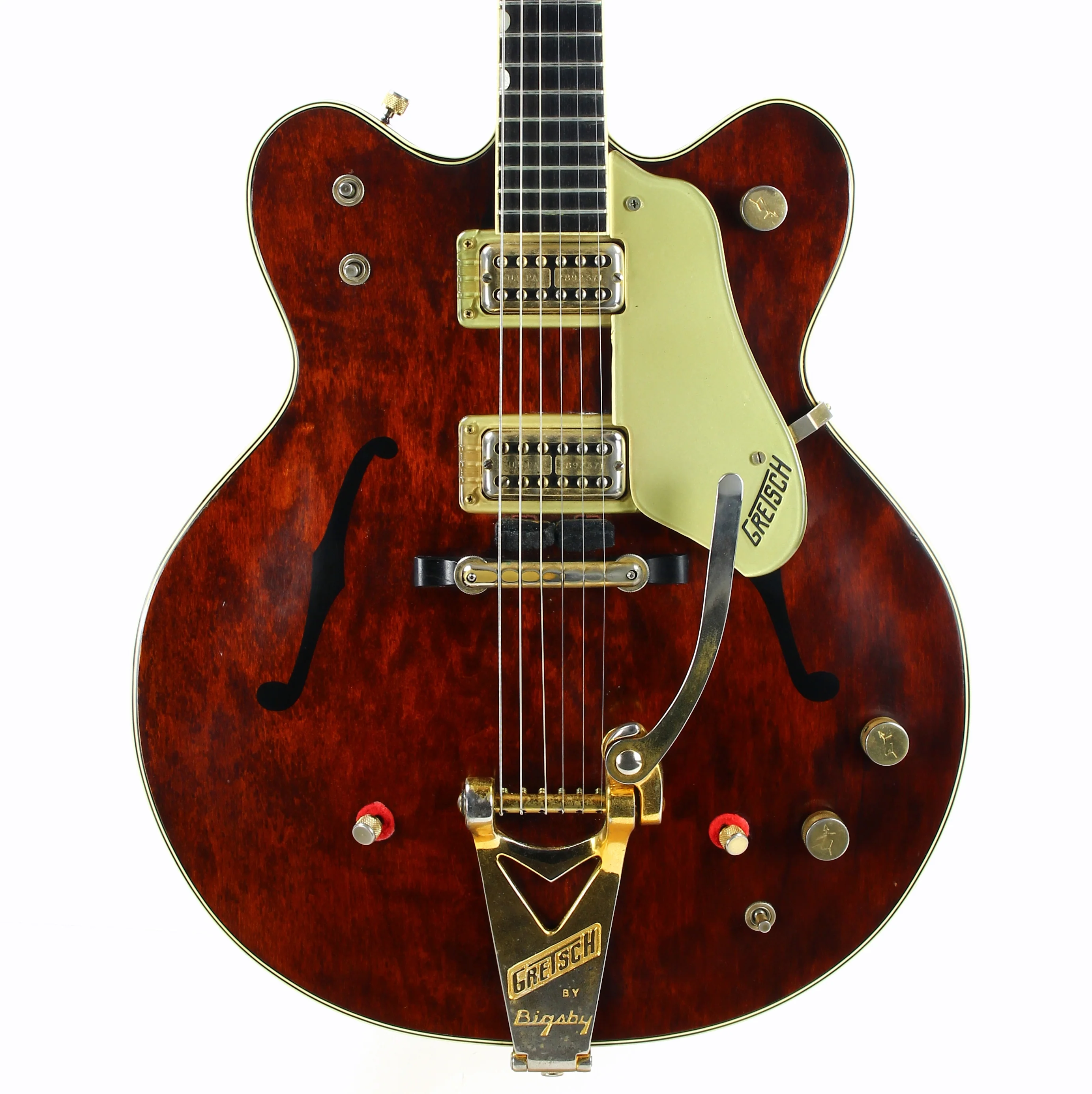 On the next day, September 12th, 1963, they resumed work on the song in EMI Studio Two, once again during that day's evening session. The earlier session was used to record a set of prescribed "Messages To Australia" as well as a fully recorded re-make of their song "Hold Me Tight," while the 7 to 11:30 pm evening began with a brand new attempt at George's "Don't Bother Me." Starting from scratch at a round number of "take 10," this attempt included all of the basic elements, including lead vocals and a guitar solo from George, the difficulty in doing both being mentioned by the performer in-between later takes. While this was somewhat slower than the finished product as we know it, it was a near perfect rendition. The only flaws were George’s occasional off key vocal and Ringo’s accent flub at the very end, which prompted George to sarcastically sing “oh yeah, rock and roll now” as an indication that this take couldn’t be used. On the next day, September 12th, 1963, they resumed work on the song in EMI Studio Two, once again during that day's evening session. The earlier session was used to record a set of prescribed "Messages To Australia" as well as a fully recorded re-make of their song "Hold Me Tight," while the 7 to 11:30 pm evening began with a brand new attempt at George's "Don't Bother Me." Starting from scratch at a round number of "take 10," this attempt included all of the basic elements, including lead vocals and a guitar solo from George, the difficulty in doing both being mentioned by the performer in-between later takes. While this was somewhat slower than the finished product as we know it, it was a near perfect rendition. The only flaws were George’s occasional off key vocal and Ringo’s accent flub at the very end, which prompted George to sarcastically sing “oh yeah, rock and roll now” as an indication that this take couldn’t be used.
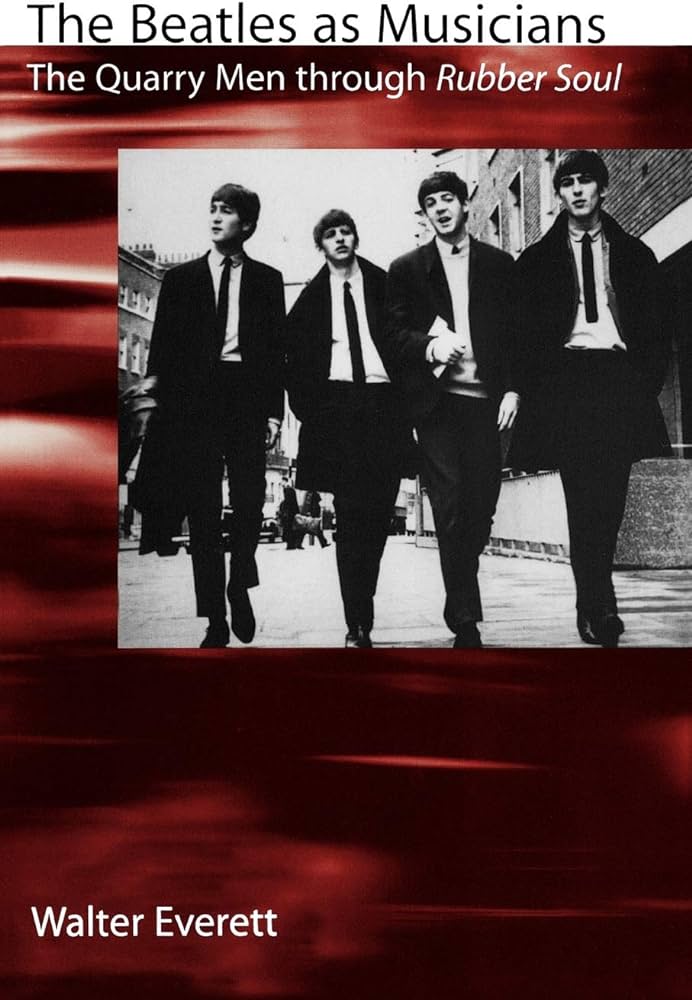 The group then decided to incorporate a "Beatles break" just before George begins singing the first verse. With this in mind, "take 11" broke down just into the first verse. "Take 12" got a little further, although Ringo kept putting these breaks in the wrong places, resulting in Harrison stopping the recording saying "no, no, no." According to Walter Everett's book "The Beatles As Musicians: The Quarry Men Through Rubber Soul," John tried to acheive a "dirty" sound on his rhythm guitar by raising the signal gain, George Martin instead suggesting the use of a compressor to acheive the desired "organ sound," the tremelo effect on his amplifier also being used to simulate a "sinister" sound as heard on recordings by British hit-makers "The Shadows." "Take 13," which then omitted that first 'Beatles break,' was deemed best. The released recording, however, shows Ringo mistakenly performing a break just before the first bridge during the words “I know I’ll.” The group then decided to incorporate a "Beatles break" just before George begins singing the first verse. With this in mind, "take 11" broke down just into the first verse. "Take 12" got a little further, although Ringo kept putting these breaks in the wrong places, resulting in Harrison stopping the recording saying "no, no, no." According to Walter Everett's book "The Beatles As Musicians: The Quarry Men Through Rubber Soul," John tried to acheive a "dirty" sound on his rhythm guitar by raising the signal gain, George Martin instead suggesting the use of a compressor to acheive the desired "organ sound," the tremelo effect on his amplifier also being used to simulate a "sinister" sound as heard on recordings by British hit-makers "The Shadows." "Take 13," which then omitted that first 'Beatles break,' was deemed best. The released recording, however, shows Ringo mistakenly performing a break just before the first bridge during the words “I know I’ll.”
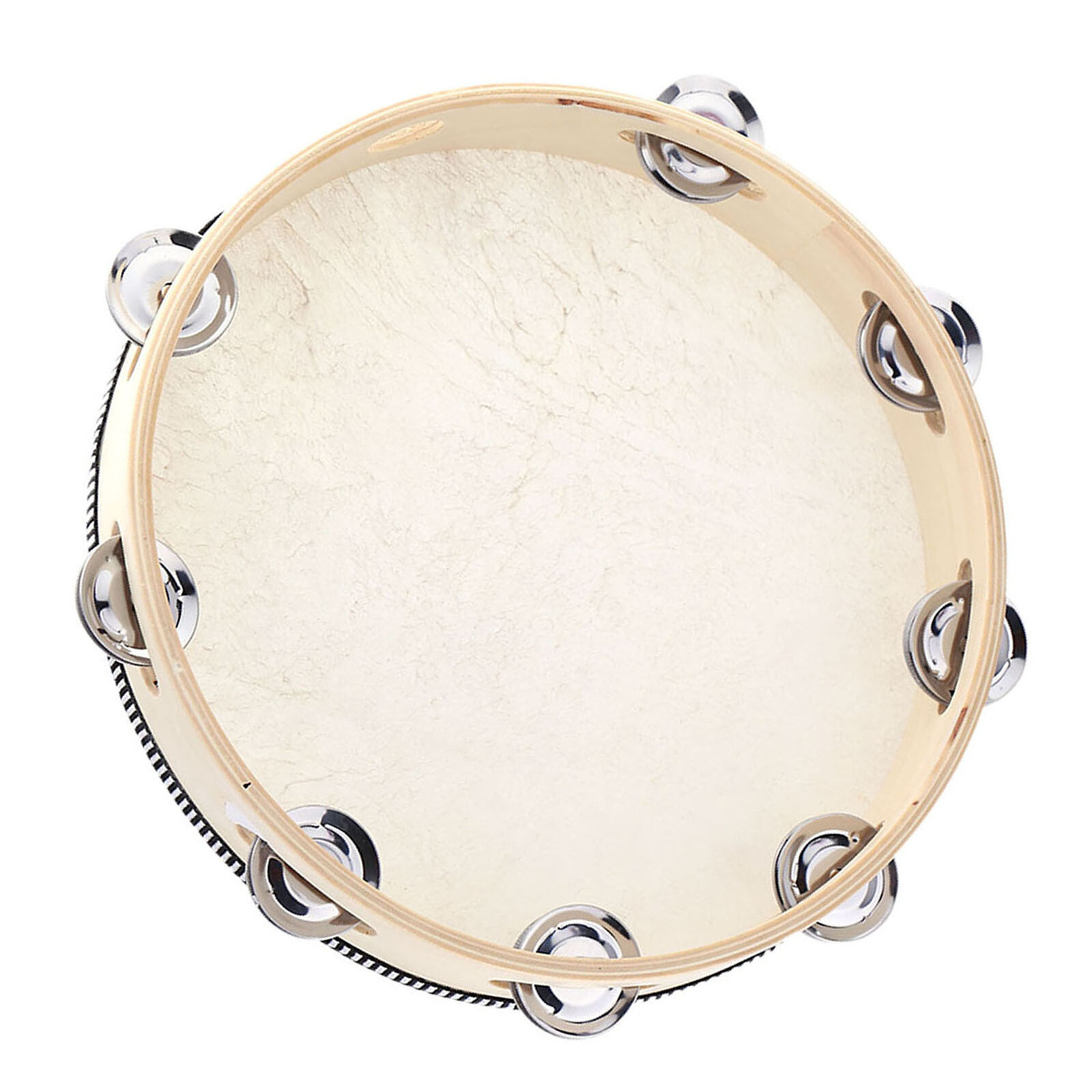 With this two-track tape being re-recorded onto another two-track machine, each Beatle simultaneously overdubs different elements, six attempts at this overdub recording being made. George double-tracked his lead vocal, Paul played claves, John played tambourine and Ringo played an Arabian bongo, all of these precussive instruments being found when they raided the EMI closet, which was located underneath the steps leading up to the control room. Photographic evidence of this overdub session exists, two of these pictures being included here. The second attempt at the overdubs, "take 15," was considered the best in the end, although they continued overdubbing through "take 19," none of those later takes being used. The song was deemed complete by approximately 8:30 pm. With this two-track tape being re-recorded onto another two-track machine, each Beatle simultaneously overdubs different elements, six attempts at this overdub recording being made. George double-tracked his lead vocal, Paul played claves, John played tambourine and Ringo played an Arabian bongo, all of these precussive instruments being found when they raided the EMI closet, which was located underneath the steps leading up to the control room. Photographic evidence of this overdub session exists, two of these pictures being included here. The second attempt at the overdubs, "take 15," was considered the best in the end, although they continued overdubbing through "take 19," none of those later takes being used. The song was deemed complete by approximately 8:30 pm.
 The mono mix was made from "take 15" on September 30th, 1963, with only George Martin and engineers Norman Smith and young Geoff Emerick in attendance. The stereo mix was hurriedly done on October 29th, 1963, by the same EMI staff, being joined by the mysterious engineer with the initials B.T. The stereo mix comprises all of the instruments panned primarily to the left channel and both of George’s lead vocal tracks panned primarily to the right, the word "four" of George's introductory count-off making it onto the released stereo version. The mono mix was made from "take 15" on September 30th, 1963, with only George Martin and engineers Norman Smith and young Geoff Emerick in attendance. The stereo mix was hurriedly done on October 29th, 1963, by the same EMI staff, being joined by the mysterious engineer with the initials B.T. The stereo mix comprises all of the instruments panned primarily to the left channel and both of George’s lead vocal tracks panned primarily to the right, the word "four" of George's introductory count-off making it onto the released stereo version.
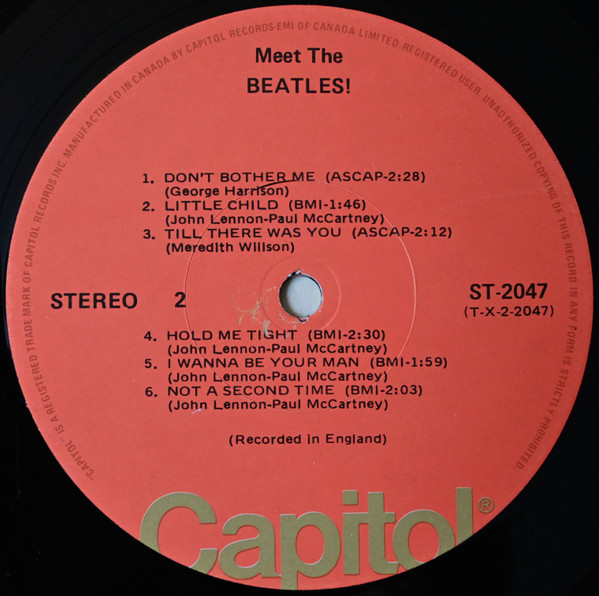 Curiously, a rare stereo mix of the song has surfaced on Canadian pressings of “Meet The Beatles!” from 1976. This Capitol album features an added word from George during the final verse: “…when she’s come home, until that day…DON’T…don’t come around…” Speculation has it that either a second stereo mix of the song was made way back on October 29th, 1963 that didn’t splice out this vocal flub from the singer, or that this otherwise identical stereo mix was touched up before it went to press upon its original release. Canada had never received a stereo mix of this song prior to this time, so an un-doctored stereo mix may have been sent to them from EMI especially for this release. In any case, this anomaly is quite interesting for Beatles enthusiasts. Curiously, a rare stereo mix of the song has surfaced on Canadian pressings of “Meet The Beatles!” from 1976. This Capitol album features an added word from George during the final verse: “…when she’s come home, until that day…DON’T…don’t come around…” Speculation has it that either a second stereo mix of the song was made way back on October 29th, 1963 that didn’t splice out this vocal flub from the singer, or that this otherwise identical stereo mix was touched up before it went to press upon its original release. Canada had never received a stereo mix of this song prior to this time, so an un-doctored stereo mix may have been sent to them from EMI especially for this release. In any case, this anomaly is quite interesting for Beatles enthusiasts.
Song Structure and Style
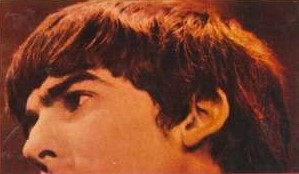 Following the lead of the majority of the Lennon / McCartney compositions written thus far, Harrison chose to follow the usual established pattern of 'verse/ verse/ bridge/verse' (or aaba) for “Don’t Bother Me.” Predictably for a lead guitarist, a guitar solo spot was written into the song, which extends the pattern to include another verse to accommodate the guitar solo, another bridge and then a final extended verse. The song follows the pattern of many George Harrison compositions within The Beatles catalog, being in a minor key with sad/angry lyrics. Following the lead of the majority of the Lennon / McCartney compositions written thus far, Harrison chose to follow the usual established pattern of 'verse/ verse/ bridge/verse' (or aaba) for “Don’t Bother Me.” Predictably for a lead guitarist, a guitar solo spot was written into the song, which extends the pattern to include another verse to accommodate the guitar solo, another bridge and then a final extended verse. The song follows the pattern of many George Harrison compositions within The Beatles catalog, being in a minor key with sad/angry lyrics.
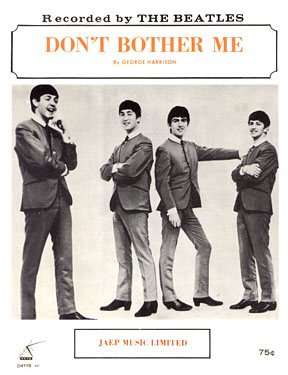 This song begins with a four measure instrumental introduction, during which you can very faintly hear George complaining about the song going too fast (which is indeed much faster than his countdown of the song in the earlier takes). We then hear the first verse begin, which is 12 measures in length, with George's double-tracked vocals to the fore. The eighth measure comprises a break with only George’s lead vocals being heard. Following the lead of many early Lennon / McCartney compositions (as well as many others in pop music at that time), the title of the song is heard at the end of each verse in order to act as a hook-line to drive home the intent of the lyrics. This song begins with a four measure instrumental introduction, during which you can very faintly hear George complaining about the song going too fast (which is indeed much faster than his countdown of the song in the earlier takes). We then hear the first verse begin, which is 12 measures in length, with George's double-tracked vocals to the fore. The eighth measure comprises a break with only George’s lead vocals being heard. Following the lead of many early Lennon / McCartney compositions (as well as many others in pop music at that time), the title of the song is heard at the end of each verse in order to act as a hook-line to drive home the intent of the lyrics.
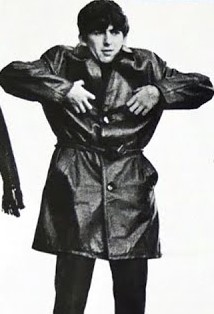 After a second verse, which is identical to the first apart from a different set of lyrics, we move to the bridge which is 16 measures in length. There is an appropriate contrast between the bridge and verses, especially regarding the melody line sung by Harrison. In the bridge, we hear four labored vocal phrases that mostly consist of half-notes. This contrasts nicely with the faster-paced lyrical phrases of the verses. Also, we hear George reach up to a dramatic F# phrase starting in the ninth bar, which depicts a sadness that corresponds perfectly with the lyrics in the bridge about needing to “get her back again.” After a second verse, which is identical to the first apart from a different set of lyrics, we move to the bridge which is 16 measures in length. There is an appropriate contrast between the bridge and verses, especially regarding the melody line sung by Harrison. In the bridge, we hear four labored vocal phrases that mostly consist of half-notes. This contrasts nicely with the faster-paced lyrical phrases of the verses. Also, we hear George reach up to a dramatic F# phrase starting in the ninth bar, which depicts a sadness that corresponds perfectly with the lyrics in the bridge about needing to “get her back again.”
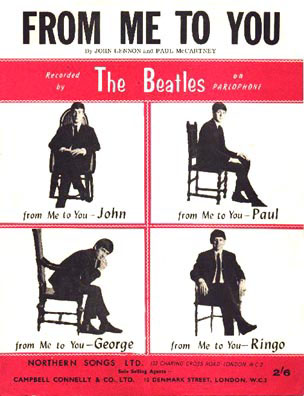 The final measure of the bridge appears as another break with only George’s vocals leading us into the third verse, which is also identical to the rest of the verses apart from a different set of lyrics. This leads to a guitar solo played over the same verse chord pattern. This solo is not unlike the solo spot for the song “From Me To You,” in that the melody line of the solo is based in part on the actual melody line being sung during the verses, straying slightly to show his musical prowess. Another similarity is that the last four measures of the solo section actually revert back to the vocals to, once again, highlight the "hook-line" title of the song. The final measure of the bridge appears as another break with only George’s vocals leading us into the third verse, which is also identical to the rest of the verses apart from a different set of lyrics. This leads to a guitar solo played over the same verse chord pattern. This solo is not unlike the solo spot for the song “From Me To You,” in that the melody line of the solo is based in part on the actual melody line being sung during the verses, straying slightly to show his musical prowess. Another similarity is that the last four measures of the solo section actually revert back to the vocals to, once again, highlight the "hook-line" title of the song.
 After repeating the emotional bridge, we repeat the third verse again, but this time extending the last phrase repeatedly until the song fades. Since the last phrase happens to be the title of the song, it drives home to its listeners without a doubt what the name of the song is. George also lifts his pitch to one not heard in any other occurrence of the title phrase of the verse while, during the fade, inadvertently harmonizing with himself during the double-tracking process. Another interesting feature of the final extended verse is the syncopated accent the group performs just before each title phrase is sung. This also drives home to listeners what the name of the song is. After repeating the emotional bridge, we repeat the third verse again, but this time extending the last phrase repeatedly until the song fades. Since the last phrase happens to be the title of the song, it drives home to its listeners without a doubt what the name of the song is. George also lifts his pitch to one not heard in any other occurrence of the title phrase of the verse while, during the fade, inadvertently harmonizing with himself during the double-tracking process. Another interesting feature of the final extended verse is the syncopated accent the group performs just before each title phrase is sung. This also drives home to listeners what the name of the song is.
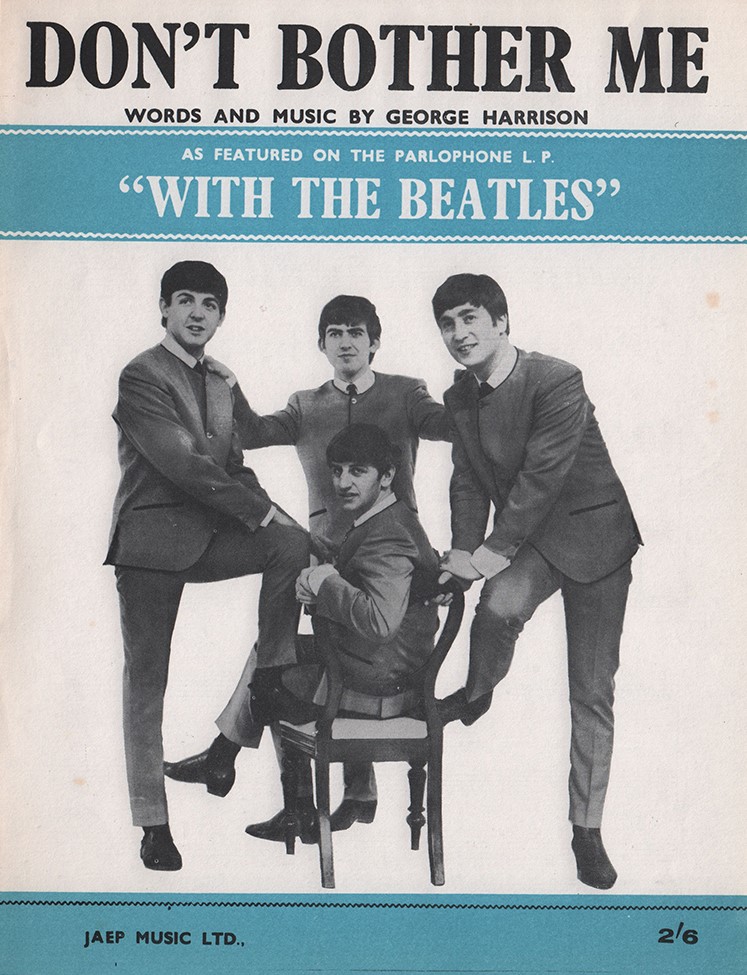 Musicologists have stated that the sign of a well written lyric is a summation of the gist of the entire song in the first sentence heard. On George’s first try, he gets it right: “Since she’s been gone, I want no one to talk to me” states in a nutshell what the song is about. The rest of the lyrics elaborate with more detail without becoming redundant or changing the story. Musicologists have stated that the sign of a well written lyric is a summation of the gist of the entire song in the first sentence heard. On George’s first try, he gets it right: “Since she’s been gone, I want no one to talk to me” states in a nutshell what the song is about. The rest of the lyrics elaborate with more detail without becoming redundant or changing the story.
The lyrics tell of a lost love that has sent the singer into a depression to the point of wanting to be left alone to wallow. He’s stating for the record, as if ‘for once and for all,’ why he wants to be left alone, and therefore expects everyone around him to leave him be for awhile. His sorrow reaches such depths that he emphatically says he wants everyone to “stay away” until she returns. Admitting that he is “to blame” for her leaving, hinting at his cheating on her, makes it apparent that she most likely will not return. The sadness expressed in the lyrics is perfectly matched by the minor key and bluesy chord pattern used in the song, which makes the lyrics quite convincing.
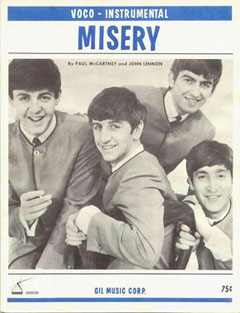 George has truly added another dimension to the songwriting pallet of The Beatles, which are thus far depicting "happy-go-lucky" youths with nothing but positive experiences to sing about. The sorrow mentioned in “There’s A Place,” as an example, is greatly overshadowed by optimism, while “Misery” is definitely sung "tongue-in-cheek." With “Baby It’s You,” although a cover song, loss is depicted in a convincing way, the difference being that the lover in the song was the one who was the “cheat,” not the singer. Therefore, “Don’t Bother Me” shows that The Beatles themselves were indeed capable of being "scoundrels" as well, capable of doing the unthinkable wrong of cheating on someone. Since George’s lyrics show him "reaping what he has sown," their fans can at least assume that the boys have consciences. George has truly added another dimension to the songwriting pallet of The Beatles, which are thus far depicting "happy-go-lucky" youths with nothing but positive experiences to sing about. The sorrow mentioned in “There’s A Place,” as an example, is greatly overshadowed by optimism, while “Misery” is definitely sung "tongue-in-cheek." With “Baby It’s You,” although a cover song, loss is depicted in a convincing way, the difference being that the lover in the song was the one who was the “cheat,” not the singer. Therefore, “Don’t Bother Me” shows that The Beatles themselves were indeed capable of being "scoundrels" as well, capable of doing the unthinkable wrong of cheating on someone. Since George’s lyrics show him "reaping what he has sown," their fans can at least assume that the boys have consciences.
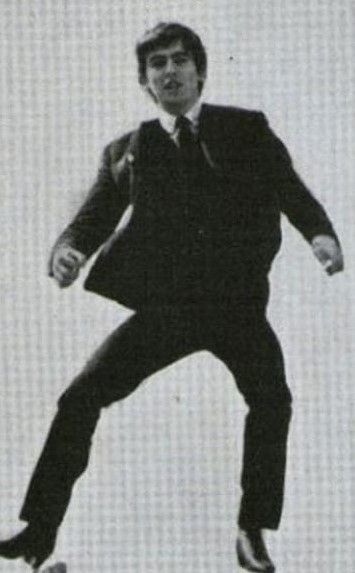 Performance-wise, George is definitely the standout with his impressive guitar work and vocals. Harrison’s fierce guitar solo, as well as his rhythm guitar work throughout the song, displays the confidence of his first original composition. Not being the Beatle with the most gifted sense of pitch, George's vocal performance exudes the confidence felt from singing an original composition for the first time. This being his first attempt at double-tracked singing, the phrasing from his second vocal strays considerably from his first, but is performed well enough not to detract from the song as a whole. George's comical sounding “me” whenever the title of the song is sung is a result of his strong Liverpudlian accent coupled with the slight vibrato in his voice when double-tracked. Performance-wise, George is definitely the standout with his impressive guitar work and vocals. Harrison’s fierce guitar solo, as well as his rhythm guitar work throughout the song, displays the confidence of his first original composition. Not being the Beatle with the most gifted sense of pitch, George's vocal performance exudes the confidence felt from singing an original composition for the first time. This being his first attempt at double-tracked singing, the phrasing from his second vocal strays considerably from his first, but is performed well enough not to detract from the song as a whole. George's comical sounding “me” whenever the title of the song is sung is a result of his strong Liverpudlian accent coupled with the slight vibrato in his voice when double-tracked.
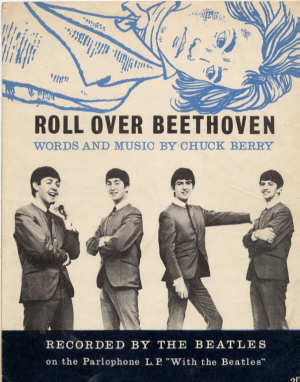 Noteworthy too is that Harrison’s voice is the only one heard on the song. Whereas harmony and/or background vocals were customary inclusions on all of The Beatles songs released thus far, this album sees them recording songs with only one vocalist, "Don't Bother Me" being the fourth one recorded for their second British album. "Till There Was You" was the first, then “Roll Over Beethoven” and “Not A Second Time.” Noteworthy too is that Harrison’s voice is the only one heard on the song. Whereas harmony and/or background vocals were customary inclusions on all of The Beatles songs released thus far, this album sees them recording songs with only one vocalist, "Don't Bother Me" being the fourth one recorded for their second British album. "Till There Was You" was the first, then “Roll Over Beethoven” and “Not A Second Time.”
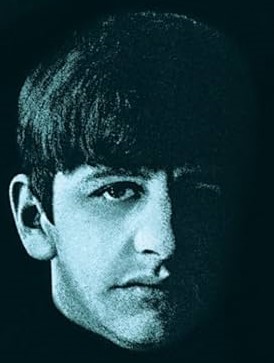 Ringo also stands out here, with his slightly Latin-flavored beat and enthusiastic drum fills before the breaks and throughout the song. His syncopated accents during the song’s fade set the command for the rest of the band. McCartney’s ominous bass triplets are barely heard because of being placed very low in the mix but, notwithstanding, are very impressive. Ringo also stands out here, with his slightly Latin-flavored beat and enthusiastic drum fills before the breaks and throughout the song. His syncopated accents during the song’s fade set the command for the rest of the band. McCartney’s ominous bass triplets are barely heard because of being placed very low in the mix but, notwithstanding, are very impressive.
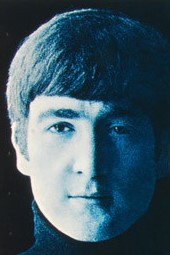 John’s rhythm guitar work, performed with a high tremolo setting on his amp, is impressive because of its intricacy, something that wouldn’t continue as The Beatles career progressed. Lennon’s disinterest in George’s original compositions would usually bring a lackluster performance out of him in the studio, if he bothered to show up at all. John’s rhythm guitar work, performed with a high tremolo setting on his amp, is impressive because of its intricacy, something that wouldn’t continue as The Beatles career progressed. Lennon’s disinterest in George’s original compositions would usually bring a lackluster performance out of him in the studio, if he bothered to show up at all.
 The label from the "Meet The Beatles" jukebox EP
|
American Releases
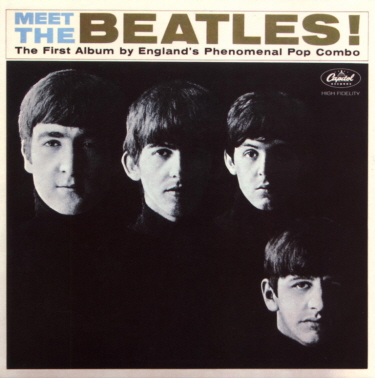 Of course, the first American release of “Don’t Bother Me” was on the multi-million selling “Meet The Beatles!,” released on January 20th, 1964. The original mono mix of the song was not used for the mono version of this US album, however. Instead, Capitol Records created a "Type B" foldover mono mix by combining both channels of the stereo mix, which differs only slightly from the original mono mix created by George Martin in 1963. This album was finally released on an individual compact disc on January 21st, 2014, both the mono and stereo mixes being contained on a single CD. A mono edition of the album on opaque blue vinyl was then released on November 22nd, 2024 for sale exclusively at Target stores. Of course, the first American release of “Don’t Bother Me” was on the multi-million selling “Meet The Beatles!,” released on January 20th, 1964. The original mono mix of the song was not used for the mono version of this US album, however. Instead, Capitol Records created a "Type B" foldover mono mix by combining both channels of the stereo mix, which differs only slightly from the original mono mix created by George Martin in 1963. This album was finally released on an individual compact disc on January 21st, 2014, both the mono and stereo mixes being contained on a single CD. A mono edition of the album on opaque blue vinyl was then released on November 22nd, 2024 for sale exclusively at Target stores.
Although the song never appeared on a single in the US or Britain, it did appear on an EP in the states. The “Meet The Beatles!” Compact 33 disc, made for American jukeboxes, included the song as the first of three on side two. This disc was also issued sometime in January of 1964.
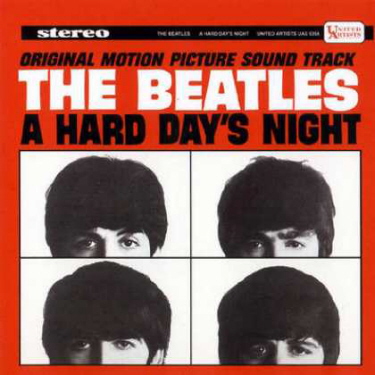 Although the song made an appearance in the movie “A Hard Day’s Night,” it did not appear on the soundtrack album, probably due to its already having been released on another album as had "She Loves You," "All My Loving" and "I Wanna Be Your Man," these also appearing in the film. Although the song made an appearance in the movie “A Hard Day’s Night,” it did not appear on the soundtrack album, probably due to its already having been released on another album as had "She Loves You," "All My Loving" and "I Wanna Be Your Man," these also appearing in the film.
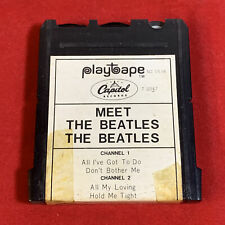 Sometime in 1967, Capitol released Beatles music on a brand new but short-lived format called "Playtapes." These tape cartridges did not have the capability to include entire albums, so two truncated four-song versions of "Meet The Beatles" were released in this portable format, "Don't Bother Me" being on one of these releases. These "Playtapes" are highly collectable today. Sometime in 1967, Capitol released Beatles music on a brand new but short-lived format called "Playtapes." These tape cartridges did not have the capability to include entire albums, so two truncated four-song versions of "Meet The Beatles" were released in this portable format, "Don't Bother Me" being on one of these releases. These "Playtapes" are highly collectable today.
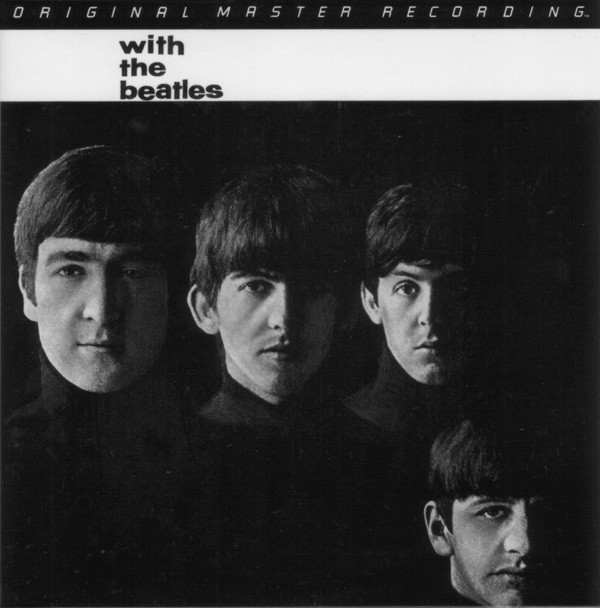 The first time the original British "With The Beatles" album was made available in the US was the "Original Master Recording" vinyl edition released through Mobile Fidelity Sound Lab in January of 1987. This album included "All My Loving" and was prepared utilizing half-speed mastering technology from the original master tape on loan from EMI. This title had a limited production, reportedly because of a damaged metal part that was needed for pressing the vinyl. Therefore, this album is said to be the rarest and most valuable Beatles album in the “Original Master Recording” series. The first time the original British "With The Beatles" album was made available in the US was the "Original Master Recording" vinyl edition released through Mobile Fidelity Sound Lab in January of 1987. This album included "All My Loving" and was prepared utilizing half-speed mastering technology from the original master tape on loan from EMI. This title had a limited production, reportedly because of a damaged metal part that was needed for pressing the vinyl. Therefore, this album is said to be the rarest and most valuable Beatles album in the “Original Master Recording” series.
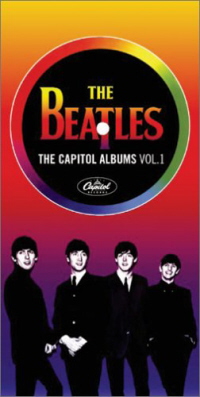 The song appeared on compact disc for the first time on February 26th, 1987 on “With The Beatles” in mono, a vinyl edition being released on July 21st, 1987. A remastered stereo version of this album was released on CD on September 9th, 2009 and on vinyl on November 13th, 2012. The November 15th, 2004 released box set “The Capitol Albums, Vol. 1” contains the song in stereo and "Type B" foldover mono as originally heard on the "Meet The Beatles!" album. The song appeared on compact disc for the first time on February 26th, 1987 on “With The Beatles” in mono, a vinyl edition being released on July 21st, 1987. A remastered stereo version of this album was released on CD on September 9th, 2009 and on vinyl on November 13th, 2012. The November 15th, 2004 released box set “The Capitol Albums, Vol. 1” contains the song in stereo and "Type B" foldover mono as originally heard on the "Meet The Beatles!" album.
On September 9th, 2009, the CD box set “The Beatles In Mono” was released featuring “Don’t Bother Me” in an impressively clean remastered mono state. The vinyl edition was first released on September 9th, 2014.
Live Performances
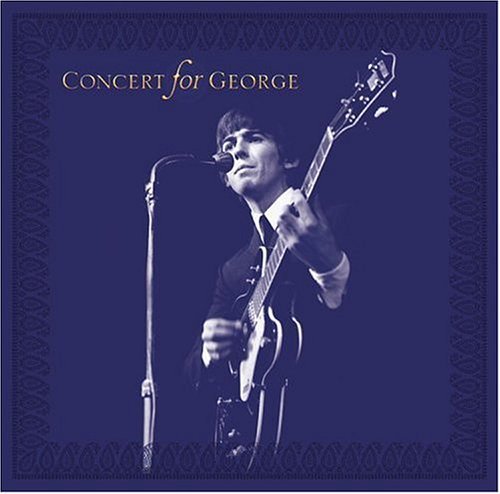 Curiously, The Beatles never performed the song in any live performance. September 12th, 1963, when the song was completed in the studio, was the last time the band ever touched it. The song was never performed by George during his solo years either, even on his 1991 tour of Japan where he resurrected many of his Beatles-written material. “Don’t Bother Me” was so inconsequential that it didn’t even get performed during the “Concert For George” tribute show after his death. It’s a shame that such a finely crafted first composition by a highly respected songwriter wouldn’t be recognized for what it was. Curiously, The Beatles never performed the song in any live performance. September 12th, 1963, when the song was completed in the studio, was the last time the band ever touched it. The song was never performed by George during his solo years either, even on his 1991 tour of Japan where he resurrected many of his Beatles-written material. “Don’t Bother Me” was so inconsequential that it didn’t even get performed during the “Concert For George” tribute show after his death. It’s a shame that such a finely crafted first composition by a highly respected songwriter wouldn’t be recognized for what it was.
Conclusion
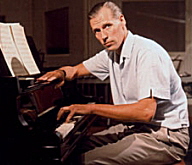 George Harrison had an unfortunate experience in his formative years as a songwriter. He was eclipsed by two of the most gifted songwriters history has known. Therefore, his attempts to be heard as a composer went largely unnoticed and viewed as inconsequential. George Martin refused to spend much time on George Harrison compositions simply because they would not be the ‘money-makers.’ Therefore, his songs were rushed through quickly in order to pacify the composer. Even Lennon and McCartney viewed George’s songs as secondary, in this case not providing backing vocals where they would naturally fit as well as adding exotic instruments on the overdub track. George Harrison had an unfortunate experience in his formative years as a songwriter. He was eclipsed by two of the most gifted songwriters history has known. Therefore, his attempts to be heard as a composer went largely unnoticed and viewed as inconsequential. George Martin refused to spend much time on George Harrison compositions simply because they would not be the ‘money-makers.’ Therefore, his songs were rushed through quickly in order to pacify the composer. Even Lennon and McCartney viewed George’s songs as secondary, in this case not providing backing vocals where they would naturally fit as well as adding exotic instruments on the overdub track.
 However, “Don’t Bother Me” did not go unnoticed in the media. William Mann, in his historic review of The Beatles’ music in the London paper The Times, touched on this song in a somewhat flattering way. In comparison to Lennon and McCartney’s songwriting technique, he describes the song as “harmonically a good deal more primitive, though it is nicely enough presented.” Not bad for someone’s first stab at songwriting. However, “Don’t Bother Me” did not go unnoticed in the media. William Mann, in his historic review of The Beatles’ music in the London paper The Times, touched on this song in a somewhat flattering way. In comparison to Lennon and McCartney’s songwriting technique, he describes the song as “harmonically a good deal more primitive, though it is nicely enough presented.” Not bad for someone’s first stab at songwriting.
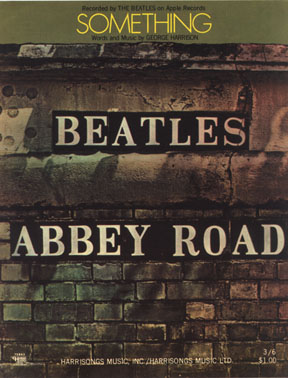 It was only towards the end of The Beatles career that Harrison’s compositions were treated with the same ‘tender loving care’ as the other songs, including string arrangements and multiple overdub sessions. This lack of encouragement from George Martin has caused him to go on record expressing his regret at not having nurtured Harrison as a composer. Both Lennon and McCartney had admitted their reluctance to encourage George. In 1969, in conversation with Paul, Lennon had said, “We always carved the singles up between us…We’ve never offered George b-sides; we could have given him a lot of b-sides, but because we were two people you had the a-side and I had the b-side.” McCartney then responded, “I think that until now, until this year, our songs have been better than George’s. Now this year his songs are at least as good as ours.” In later years, McCartney has admitted that George “became very good, writing a classic like ‘Something.’” It was only towards the end of The Beatles career that Harrison’s compositions were treated with the same ‘tender loving care’ as the other songs, including string arrangements and multiple overdub sessions. This lack of encouragement from George Martin has caused him to go on record expressing his regret at not having nurtured Harrison as a composer. Both Lennon and McCartney had admitted their reluctance to encourage George. In 1969, in conversation with Paul, Lennon had said, “We always carved the singles up between us…We’ve never offered George b-sides; we could have given him a lot of b-sides, but because we were two people you had the a-side and I had the b-side.” McCartney then responded, “I think that until now, until this year, our songs have been better than George’s. Now this year his songs are at least as good as ours.” In later years, McCartney has admitted that George “became very good, writing a classic like ‘Something.’”
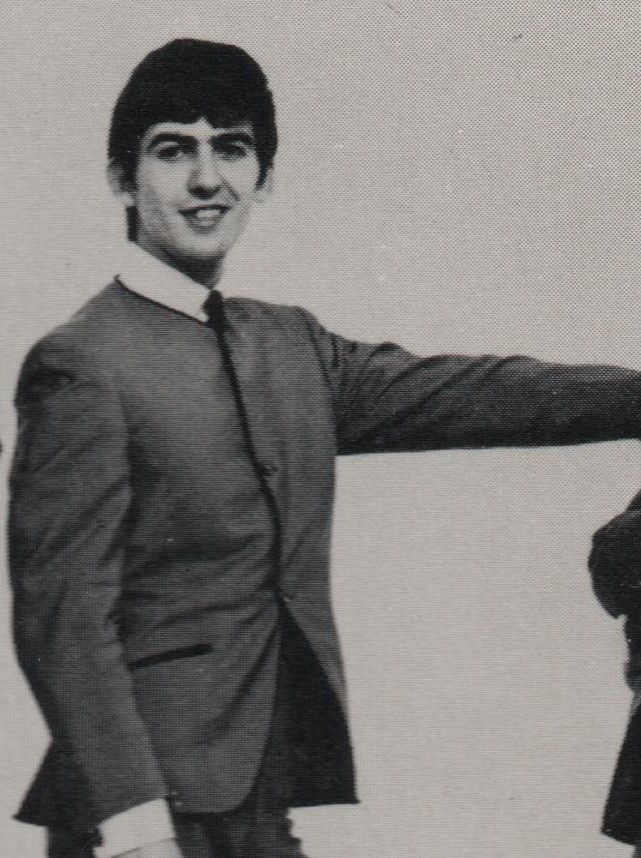 Nonetheless, for 1963, “Don’t Bother Me” was unlike anything the Beatles had done before. It truly set the stage for the growth and maturity that The Beatles were soon to project in their songwriting as the years progressed. The subject matter of this song, as well as the mood it portrayed, showed The Beatles as capable of doing more than making us feel good. It showed they were capable of writing songs that were creative and expressive in any subject matter. And, without many people realizing it to this day, it was George Harrison who first began to expand those boundaries. Nonetheless, for 1963, “Don’t Bother Me” was unlike anything the Beatles had done before. It truly set the stage for the growth and maturity that The Beatles were soon to project in their songwriting as the years progressed. The subject matter of this song, as well as the mood it portrayed, showed The Beatles as capable of doing more than making us feel good. It showed they were capable of writing songs that were creative and expressive in any subject matter. And, without many people realizing it to this day, it was George Harrison who first began to expand those boundaries.
Song Summary
“Don’t Bother Me”
Written by: George Harrison
- Song Written: August 19, 1963
- Song Recorded: September 12, 1963
- First US Release Date: January 20, 1964
- First US Album Release: Capitol #ST-2047 "Meet The Beatles!”
- US Single Release: Capitol #SXA 2047 (Meet The Beatles Jukebox EP)
- Highest Chart Position: n/a
- British Album Release: Parlophone #PCS 3045 “With The Beatles”
- Length: 2:29
- Key: E minor
- Producer: George Martin
- Engineers: Norman Smith, Richard Langham
Instrumentation (most likely):
-
George Harrison – Lead Vocals, Lead and Rhythm Guitar (1962 Gretsch 6122 Country Gentleman)
-
John Lennon – Rhythm Guitar (1958 Rickenbacker 325), Tambourine
-
Paul McCartney - Bass Guitar (1961 Hofner 500/1), Claves
-
Ringo Starr – Drums (1963 Ludwig Downbeat Black Oyster Pearl), Arabian Bongo
Written and compiled by Dave Rybaczewski
|
IF YOU WOULD LIKE TO MAKE A DONATION TO KEEP THIS WEBSITE UP AND RUNNING, PLEASE CLICK BELOW!
Sign Up Below for our MONTHLY BEATLES TRIVIA QUIZ!
|